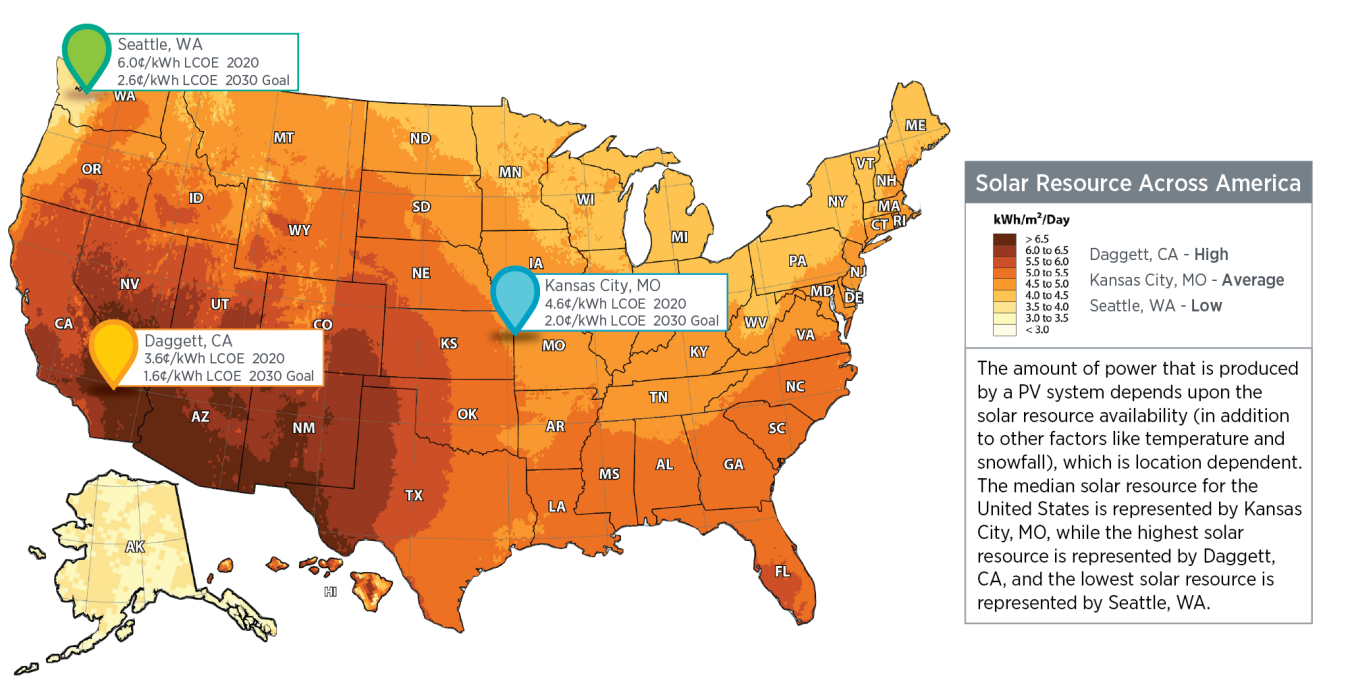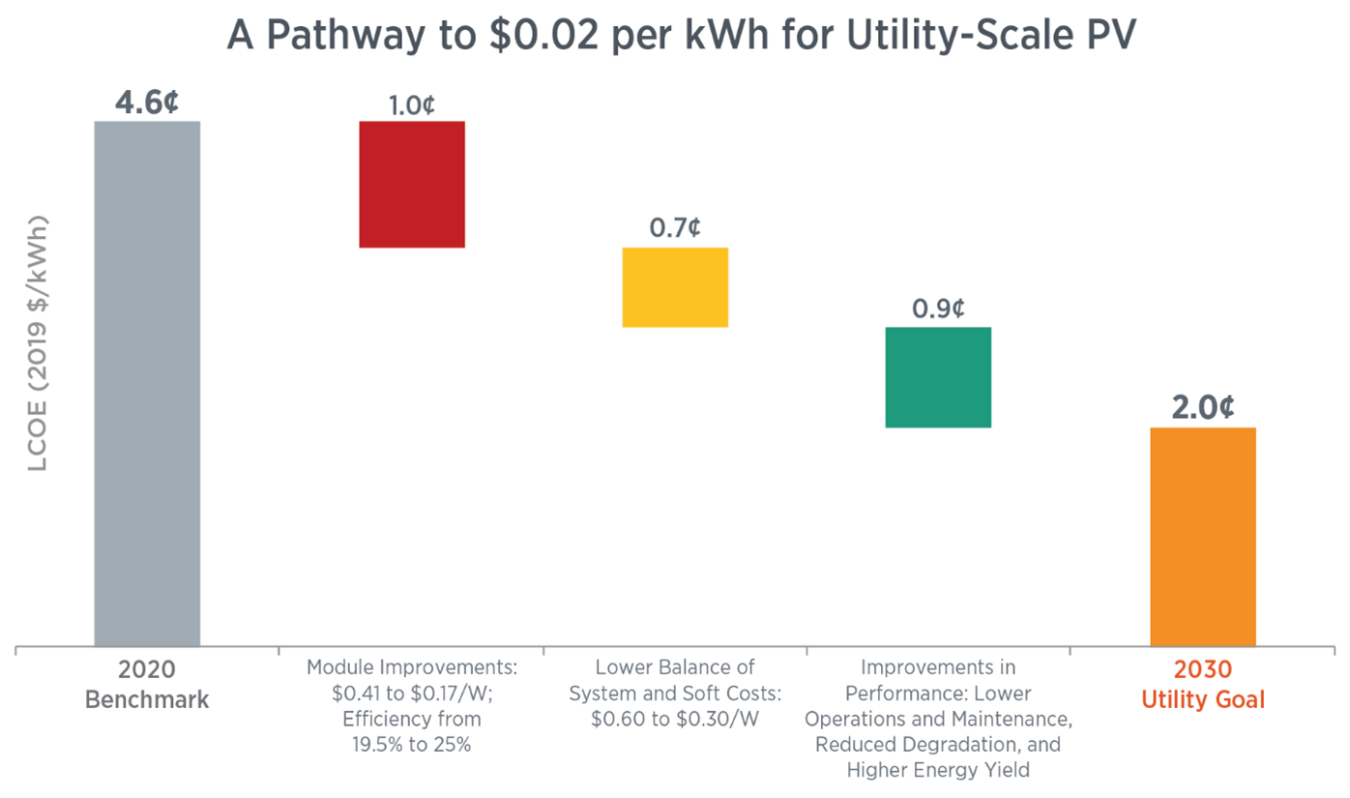The U.S. Department of Energy (DOE) Solar Energy Technologies Office (SETO) works to help decarbonize the electricity sector and the economy by funding innovations that reduce solar power costs and rapidly increase solar deployment across the country.
Cost reduction is essential to increasing solar deployment. To address the climate emergency, the rate of solar deployment must increase two to five times. As a result, DOE announced on March 25, 2021 that it is accelerating its timeline for achieving its utility-scale photovoltaic (PV) cost reductions.
In 2016, as the industry approached the SunShot 2020 utility-scale PV cost goal of $0.06 per kilowatt-hour (kWh), DOE set a new cost target of $0.03 per kWh by 2030. Now the new target for unsubsidized levelized cost of energy (LCOE) for utility-scale PV at the point of grid connection is $0.03/kWh for 2025 and $0.02/kWh for 2030. These targets are for areas of the country with average solar resource and could make solar the lowest-cost source of new electricity generation across most of the country.

These targets are aggressive, but there are multiple realistic paths to achieve them. All pathways require significant improvements across SETO’s research areas, but greater progress in one area can allow for more moderate change in others. These interdependencies and trade-offs create many opportunities for technology development. This figure demonstrates one pathway to the new 2030 cost target:

SETO is targeting concurrent reductions for commercial and residential rooftop PV costs to $0.04/kWh and $0.05/kWh by 2030, respectively.
Learn more about SETO’s goals.

